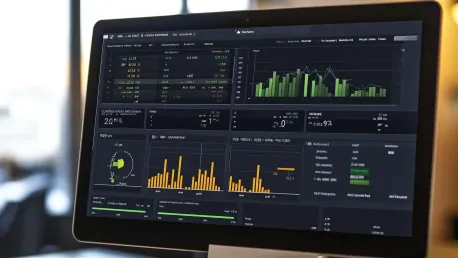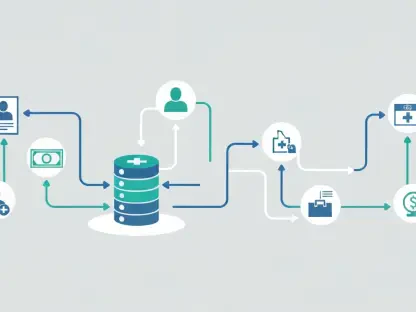The rapid advancement of digital technologies has led to a surge in data generation, making real-time analytics a game-changer for businesses. By analyzing data as it becomes available, organizations can make swift, informed decisions, enhancing their operational efficiency and responsiveness. The capability to process and analyze data instantaneously provides immediate insights that traditional batch processing cannot offer. Real-time analytics enables organizations to stay ahead of market trends and respond to changes dynamically. This article explores how real-time analytics can revolutionize your business workflow, highlighting its benefits, challenges, and practical applications across various industries. With its potential to profoundly impact decision-making and customer engagement, understanding the power of real-time insights has become essential for today’s competitive business landscape.
The Power of Immediate Insights
Real-time analytics allows businesses to process and analyze data instantaneously, providing immediate insights that traditional batch processing cannot offer. This capability enables organizations to stay ahead of market trends and respond to changes dynamically. For businesses, this translates into the ability to make quicker and more effective decisions. When data is visualized promptly, teams can address issues proactively rather than reactively. This immediacy in dealing with data ensures that organizations remain agile in the face of evolving market scenarios. With traditional analytics often involving delays between data collection and data processing, real-time analytics removes these silos, allowing for a seamless workflow where information drives action.
The benefits of real-time analytics extend beyond mere speed. The accuracy and relevance of insights gleaned from real-time data ensure that decisions are based on the most current state of affairs, directly reflecting present conditions rather than past trends. This proactive stance not only helps in maintaining a competitive edge but also provides a foundation for innovation. When businesses are equipped with real-time insights, they can experiment with new strategies, measure their impact immediately, and iterate rapidly. This fosters a culture of continuous improvement and innovation, aligning organizational goals with actionable intelligence derived from real-time data streams.
Enhancing Decision-Making Capabilities
Access to real-time data significantly improves decision-making processes, enabling teams to convert customer behaviors and internal performance metrics into actionable insights immediately. For instance, monitoring customer behavior in real-time allows for timely adjustments to marketing strategies, targeting the right audience with the right message at the right time. This agility is crucial in preventing potential losses and seizing opportunities as they arise. Effective resource allocation becomes possible, where decisions are driven by live data instead of historical data, ensuring a more efficient use of company resources.
Operational costs can see marked reductions when decisions are informed by real-time data. Machine downtime, inventory mismanagement, and other operational inefficiencies can be swiftly identified and addressed. By aligning actions with market demands and real-time feedback, businesses optimize their operations, leading to better overall outcomes. Furthermore, strategic decisions, like entering new markets or launching new products, can be guided by insights drawn from real-time analytics, ensuring a data-backed approach that minimizes risks and maximizes returns. In essence, real-time analytics acts as a strategic compass, guiding businesses through the complexities of modern markets with real-time data at the helm.
Boosting Customer Engagement
Real-time analytics also plays a crucial role in enhancing customer engagement, transforming the way businesses interact with their clientele. By responding swiftly to customer inquiries and feedback, companies can build stronger relationships, increasing customer satisfaction and loyalty. The ability to access customer data immediately enables personalized interactions, which are key to fostering a sense of individual attention and care. For example, customer service teams equipped with real-time insights can resolve issues quickly, often before the customer is significantly impacted, thereby improving the overall customer experience.
This proactive approach to customer service sets businesses apart in a competitive landscape. When customers feel heard and valued, their trust in the brand increases, leading to higher retention rates and better word-of-mouth referrals. Moreover, real-time analytics enables businesses to track customer sentiment through social media and other feedback channels constantly. This continuous monitoring allows organizations to gauge customer satisfaction and make necessary adjustments promptly, ensuring that the voice of the customer is always at the forefront of business strategies. By leveraging real-time data, businesses not only enhance customer engagement but also create a loyal customer base that advocates for the brand.
Addressing Implementation Challenges
While the benefits of real-time analytics are clear, implementing this technology comes with challenges that must be navigated carefully. Ensuring data quality is essential, as inaccurate or incomplete data can lead to misleading insights and poor decisions. Real-time systems need to be equipped with robust data validation processes to maintain the integrity of the information being analyzed. Another significant challenge lies in the scalability of technology solutions. As organizations grow, so does the volume of data generated, necessitating systems that can handle large amounts of information efficiently without compromising on speed or accuracy.
Furthermore, training staff to interpret real-time data and derive valuable insights is critical for the successful implementation of real-time analytics. Employees need to develop a keen understanding of data analysis techniques and the tools used in real-time analytics. Proper training ensures that the workforce can leverage the technology to its fullest potential, making informed decisions based on real-time data insights. Additionally, cybersecurity concerns must be rigorously addressed to protect the vast amounts of data from unauthorized access and breaches. Organizations need to implement stringent security measures, including encryption, access controls, and regular security audits, to safeguard their data assets.
Diverse Applications Across Industries
Real-time analytics has versatile applications across various sectors, demonstrating its broad utility and impact. In the retail industry, businesses use real-time data to monitor sales trends and adjust inventory levels rapidly, preventing stockouts and overstock situations. This capability directly impacts profitability by ensuring that the right products are available at the right time, enhancing customer satisfaction and driving sales. Retailers can also leverage real-time insights to design personalized marketing campaigns, tailoring offers and promotions to individual customer preferences and behaviors, thereby increasing engagement and conversion rates.
In the finance sector, real-time analytics enhances risk management by identifying suspicious transactions instantly and aiding in fraud detection. Financial institutions can monitor transactions in real-time, flagging anomalies that deviate from normal patterns and initiating immediate investigations. This proactive approach to fraud prevention not only protects the institution’s assets but also builds customer trust. In healthcare, real-time analytics improves patient records management and treatment outcomes by uncovering patterns in health data. For instance, healthcare providers can track patient vitals and other health indicators in real-time, allowing for timely interventions and personalized care plans, ultimately leading to better patient outcomes.
Future Prospects of Real-Time Analytics
Real-time analytics empowers businesses to process and analyze data instantly, delivering insights that traditional batch processing can’t match. This capability helps organizations stay ahead of market trends and respond quickly to changes. With real-time data, businesses can make faster and more effective decisions. Prompt data visualization allows teams to proactively address issues rather than react to them. This immediacy ensures organizations stay agile in the face of shifting market conditions. Traditional analytics often involve delays, but real-time analytics eliminate these gaps, creating a seamless workflow where information directly influences action.
Beyond speed, the benefits of real-time analytics include the accuracy and relevance of insights, ensuring decisions reflect current conditions rather than outdated trends. This proactive approach helps maintain a competitive edge and fosters innovation. Equipped with real-time insights, businesses can experiment with new strategies, measure their impact immediately, and make rapid adjustments. This encourages a culture of continuous improvement and innovation, aligning organizational goals with actionable intelligence derived from live data streams.









